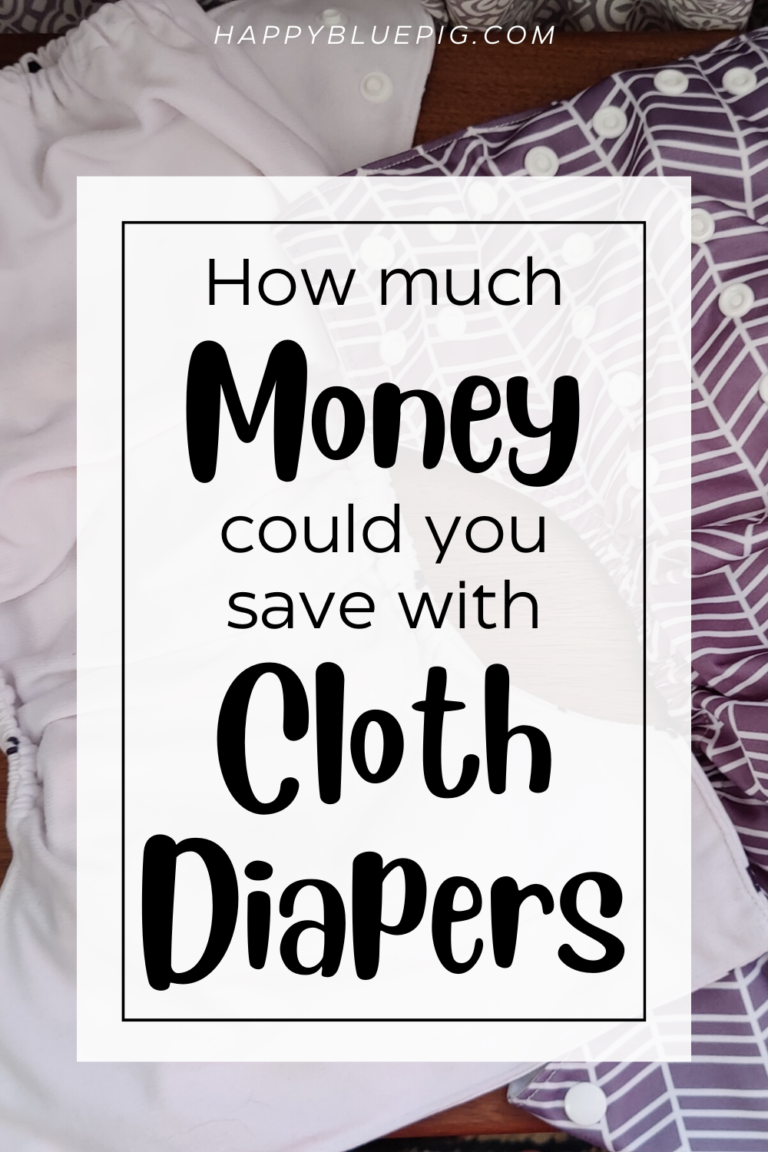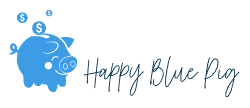So you’re considering using cloth diapers, but you have some questions? I did too. Actually, when I was expecting, I video-chatted with a friend in another state because I knew she used several kinds of cloth diapers. She was a life-saver. I had no idea what kind was best or how much I needed. I’d love to be a help to other parents too, especially if you don’t have friends who use cloth diapers. So today, I’ll pass along all that I learned through my cloth diapering journey.
This post may contain affiliate links, which means I’ll receive a commission if you purchase through my links, at no extra cost to you. Please read full disclosure for more information.
Why use cloth diapers?
Environmentally friendly
Disposable diapers are destined for the landfill, and they will stay there for potentially hundreds of years. Biodegradable disposable diapers are better, but still take several months at best to decompose. And of course, biodegradable are twice as expensive. That cost can add up if you are on a tight budget with a new baby.
Cloth diapers and diaper covers are usually made from natural materials, like cotton, bamboo, and wool. They are, of course, reusable so there is less waste. And when they are ultimately disposed of, the natural materials decompose much faster. You will need to use more energy in order to wash them, but I limited that by washing in cold water and hanging to dry. Personally, I just couldn’t live with the idea of so many diapers sitting in a land fill. And we couldn’t afford biodegradable. Babies use easily 2,000 diapers a year, often more than that. That’s a lot of waste, and a lot of expense
Lower cost
Cloth diapers have a higher up front cost, but easily win out as the lowest cost over time. How much cloth diapering costs depends heavily on what you buy. Some kinds of cloth diapers are more expensive than others. If you can’t do wash as frequently, you will need to buy a larger diaper stash. However, the cost of disposable diapers is very high.
After several attempts, my son is now fully potty trained at 2 1/2. We used cloth diapers primarily, but still used disposables for travel and outings. We got the best deals we could with coupons, buying in bulk, and our local salvage grocery store. Even so, when I do the math, we would have spent upwards of $900 if we only used disposable diapers.
Best of all, if you plan to have another child, you can reuse some or all of your diapers again. That will save you even more money!
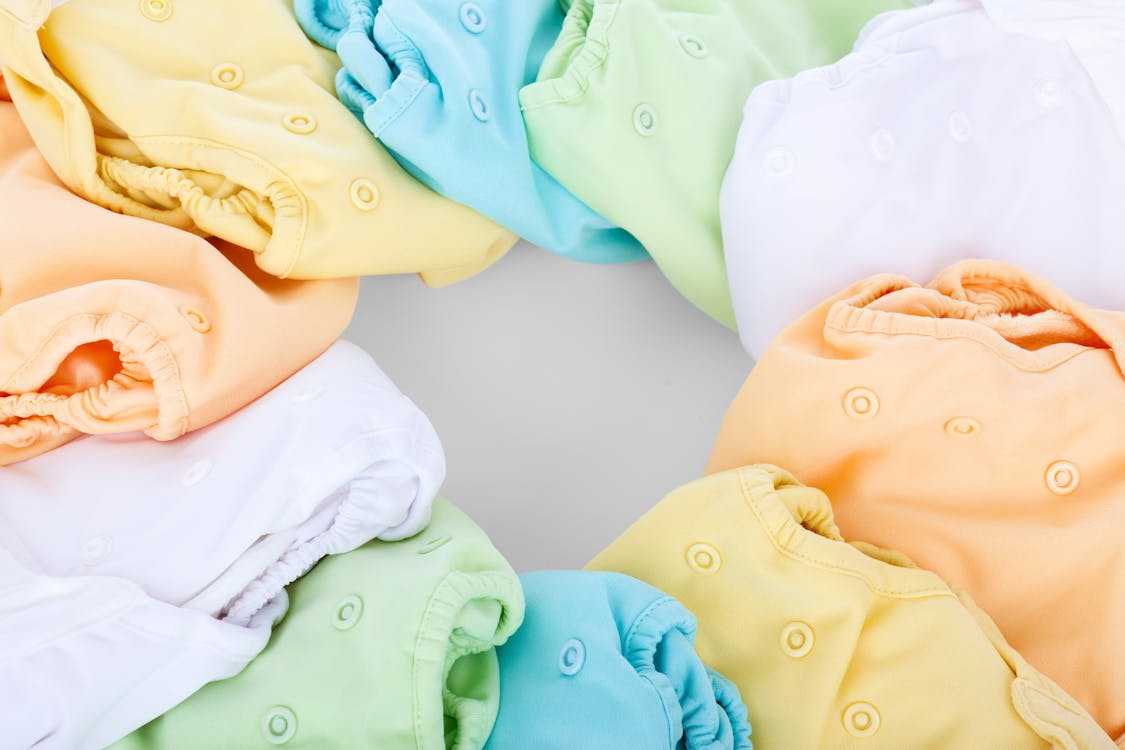
Cloth can be easier on sensitive skin
Some babies just don’t do well with the ingredients and chemicals in disposable diapers and baby wipes. Cloth diapers are softer on baby’s skin, and they tend to be made of natural materials. If your baby has diaper rash, cloth diapers tend to allow more airflow which can help heal diaper rash faster.
They are Cute!
Ok, so buying a cloth diaper just because it is cute is not the best reason. But it is a nice bonus! There are so many beautiful colors and patterns for diapers and diaper covers these days
Do they leak more than disposables?
I don’t have any scientific study, just my personal experience. For my son, we used flat diapers, prefold diapers, and pocket diapers, and then disposables when we were out of the house. I actually had far more poop blowouts with disposable diapers. My best guess as to why that would be is that we could really get a good fit with cloth diapers. Disposable diapers sometimes have a poop blowout up the back, but the cloth diaper didn’t ever seem to gap at the back.
Leaking with cloth diapers is pretty common at night. I think the key, from my experience and what I’ve heard, is finding the right combination of diaper and insert. We were gifted some great bamboo inserts from a family member, and they were very absorbent. A regular cloth diaper alone wouldn’t have been enough, but these inserts kept him leak-free all night. They also kept his skin dry, with the fleece cover on the inserts.
Kinds of Cloth Diapers
There are so many kinds of cloth diapers these days, that it can be overwhelming. But it really is a wonderful thing to have so many choices! The key is to figure out what kind fits your needs and lifestyle.
Flats
We used flats with my son. Flat diapers are essentially a large flat square of cotton or muslin. There are many different ways to fold these diapers, before you put them on your baby. Some folds are better for boys, with more diaper in the front. Other folds have a rolled edge to better contain poop. Some people don’t even fold them at all, they just push it together so it fits in the diaper cover. There are so many Youtube videos of different folds, but I used the kite fold. The kite fold was easy and always worked well for me. Flat diapers are then secured with a diaper pin or a Snappi (more on that later), and covered by a diaper cover. The diaper cover can be reused at multiple diaper changes before washing, unless soiled.
Pros:
- Cheapest kind of cloth diaper
- Variety of ways to wear
- Can fit a baby as he or she grows, you don’t need to buy many different sizes
- Wash easily, Dry very quickly
- These are great for a variety of other uses, including burp cloths and cleaning. If you buy a few to try but end up using a different kind of diaper, they will not go to waste!
Cons:
- Depending on how involved a fold you use, it takes extra time and effort
- Can be difficult to keep it folded the way you want while putting it on a wiggly baby
- You will need a diaper cover and a Snappi or diaper pin
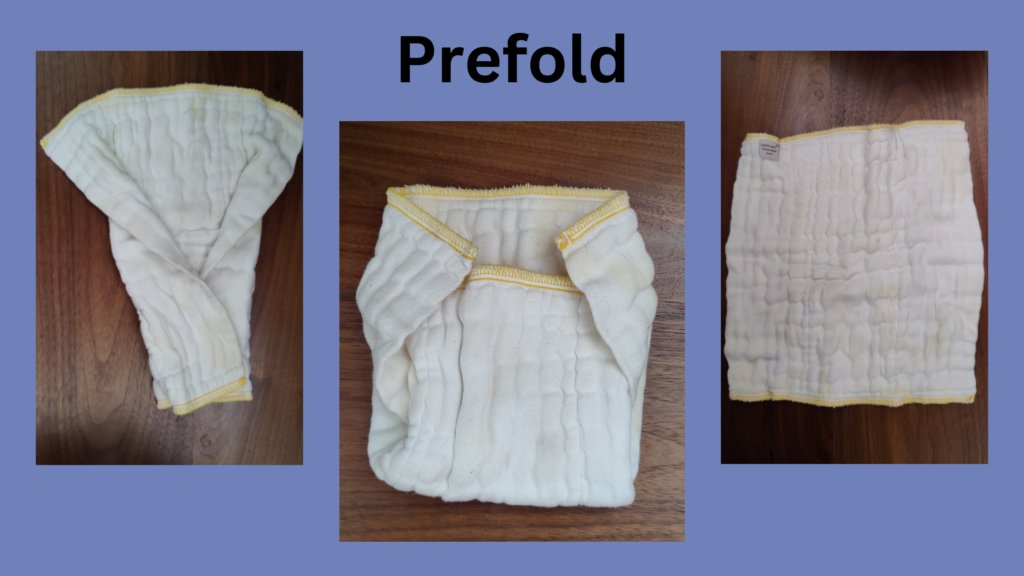
Prefolds
Think of a prefold as a flat diaper that has already been folded for you. Like flats, a prefold is made from cotton and is used with a Snappi or diaper pin and a diaper cover. These are sold in a variety of sizes, and there is very little folding or prep needed to put this on your baby.
Pros:
- Very cheap
- Easy to use, little to no folding required
- Can be used as a diaper, or also as an insert in a pocket diaper.
- Wash easily, Dry quickly
- I love these for cleaning up spills or for keeping my son’s lap clean while he eats soup. We bought too many of one size and never used them as diapers, but they are very absorbent for spills. Also, check out the picture below of a sweet applique burp cloth my friend made for me using a prefold diaper!
Cons:
- You will need to buy new sizes as your baby grows
- You will need a diaper cover and a Snappi or diaper pin
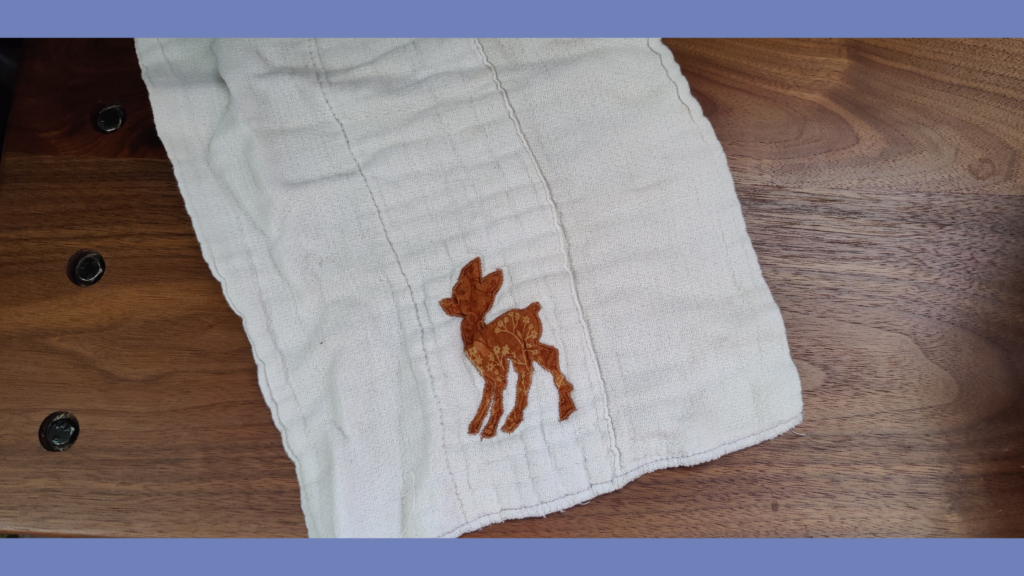
Fitted
Fitted diapers are made of the same material as prefolds, but are shaped like a diaper and fasten with snaps. You will not need a Snappi or diaper pin, but you will need a diaper cover. Fitted diapers have elastic at the waistband and legs, helping to further prevent leaks and blowouts. Diaper covers can be reused for multiple changes as long as they are not soiled, just changing the fitted diaper.
Pros:
- Easy to put on baby, no folding and closes with snaps
- Good budget alternative to Pocket, All-in-two, and All-in-one diapers
- Easy to wash and quick drying
Cons:
- Will need to use diaper cover
- More expensive than flats and prefolds
- Will need different sizes as baby grows

Pocket diapers
Pros:
- Easy to get ready and put on baby. All you need to do is put in an insert and close the diaper with the snaps or velcro
- Some pocket diapers have multiple snaps to adjust size so that you can use the same diaper from newborn to potty training. However, you may not be able to get a close fit for a newborn and the diaper will be bulky.
- Some daycares may be willing to use your pre-stuffed pocket diapers for your child while they are there.
Cons:
- More expensive than flats or prefolds
- Pocket diapers and inserts take longer to dry than flats and prefolds
- You will likely need to buy a different diaper for the newborn stage, if buying a brand of pocket diaper that does not adjust small enough
- Both pocket diaper and insert will need to be changed at each diaper change, so you will need more pocket diapers.
All-in-twos
Pros:
- Easy to put on baby, with little preparation. Just snap in the absorbent pad after washing
- Waterproof outer layer can be reused multiple times before washing, so you don’t need as many
- Dry faster than all-in-ones, as the absorbent layer is removed and washed separately
- Some daycares may be willing to use your all-in-two diapers for your child while they are there.
Cons:
- More expensive than flats, prefolds, and pocket diapers.
- Take longer to dry than flats and prefolds
All-in-ones
All-in-one diapers are as close to the ease of a disposable diaper as you can get. Everything is in one piece, and you simply fasten it with velcro or snaps. At each diaper change, you will change the whole diaper.
Pros:
- Easiest diaper to use and put on baby, no preparation and easy to fasten with snaps or velcro.
- Some daycares may be willing to use your all-in-one diapers for your child while they are there.
Cons:
- Slowest diaper to dry
- Most expensive type of cloth diaper. Each diaper is more expensive, and you will need a new diaper for every change. You cannot save money as with other types by reusing diaper covers or outer layers and just changing the absorbent pad.
- All-in-one diapers are generally one size fits all, with adjustable snaps. However, you will likely need an additional size to go small enough for newborns.
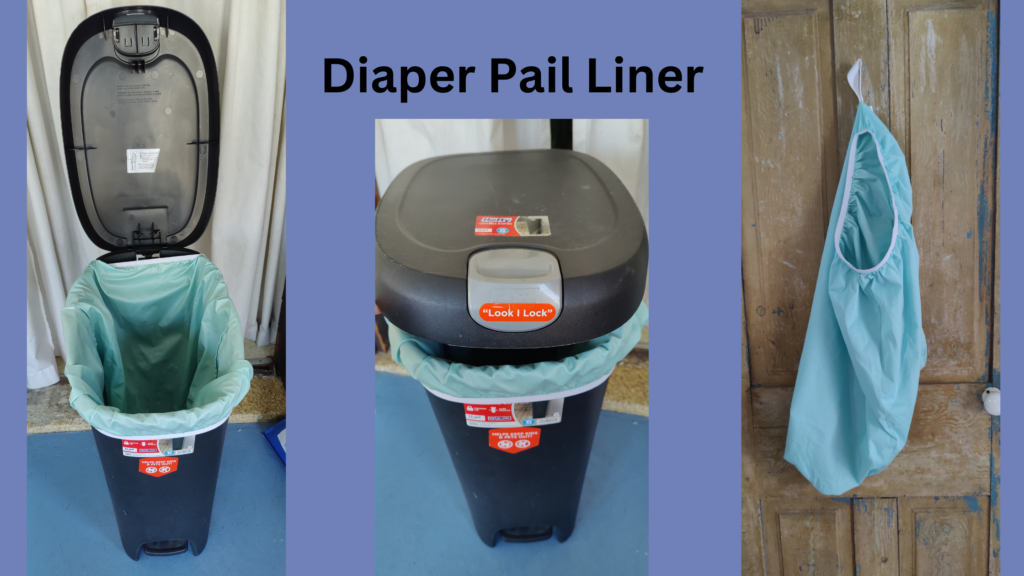
Other supplies
Diaper pail liner
There are a number of ways to store cloth diapers until washing. Some people just put them directly in the washer and run a rinse cycle now and then until they are ready to wash. My favorite method was to buy a 13 gallon trashcan with a lid and put a large pail liner from Thirsties in it. These pail liners were great for his diapers, and I still use them for wet clothes. When we go to the beach or pool, I take along the large pail liner wet bag and throw in the wet swimsuits and beach towels. Totally worth the purchase!
Wet bag
You will need a wet bag for your diaper bag. I had 3 wet bags, and that was usually enough but you may need more if you aren’t doing wash as frequently. (When I bought a set of Nora’s Nursery Pocket Diapers, a wet bag came with the set) The wet bag is a waterproof bag where you can store your used diapers when out of the house. When you get home, open the bag, turn the diapers out into the washer, and throw the wet bag in as well.
Cloth baby wipes
You can buy cloth baby wipes, but I just made mine by cutting up a piece of flannel. It was cheap, easy to make, and soft for my baby’s bottom. When you are done with the cloth wipe, just throw it in the wet bag or diaper pail with the diaper and wash them together. And since it was just a cut-up square of fabric, I didn’t feel bad about throwing them out if one was particularly yucky.
Snappi diaper fastener
A Snappi is a diaper fastener that is stretchy and similar to ace bandage fasteners. The plastic “teeth” hold the diaper, fastening it without using diaper pins. It took a bit of practice, but soon I was using Snappis quickly and easily, and I think they hold quite well. I felt better as a new parent knowing that there was no way I could stab my baby with a diaper pin! Snappi diaper fasteners are used for flats and prefold diapers.
Special diaper rash cream
You cannot use traditional diaper rash creams, like those containing zinc oxide, in cloth diapers. These diaper creams leave residue that will make your diaper less absorbent. You can do a special series of washes to “strip” the cloth diapers of residue, but it is better to use a special diaper rash cream designed for cloth diapers. I used this Diaper Balm Stick from Grovia.
Diaper covers
For flats, prefolds, and fitted diapers, you will need a diaper cover as your waterproof layer. We used Thirsties diaper covers and I was always happy with the quality and fit. A diaper cover can be used for multiple diaper changes between washes, unless it becomes soiled.
Toilet diaper sprayer
For breastfed infants, poop is water soluble and dirty diapers can be thrown straight into the wash. But once baby is eating solids, you need to remove the poop before washing. There are many methods: dunk and swoosh, washable liners, or using a toilet diaper sprayer. I didn’t have this handy set up, but my sister-in-law used this toilet sprayer and splatter shield. I was so impressed! If we have another baby, I will definitely be getting this myself. It seems like the cleanest and least icky way to deal with the poop problem.
Cloth diaper-friendly laundry detergent and stain remover
While you don’t need a special laundry detergent, you should look for a dye-free and fragrance-free laundry detergent. Don’t use fabric softeners or scent boosters as these can leave residue impacting the diapers absorption. There are many stain removers that are good for cloth diapers, but my favorite is BioKleen Bac Out Stain Remover. It was the best for stains on diapers and baby clothes. Best of all, it doesn’t need to be rinsed out, so we’ve also used it successfully to clean baby vomit off the couch and potty training accidents on the mattress. I now give BioKleen Bac Out Stain Remover at every baby shower I attend.
Green Mountain Diapers is an excellent site for everything you need to know about cloth diapering. They have a fabulous page about prepping and washing cloth diapers that you can read here.
My Experience
As I mentioned earlier, we use flat diapers, prefold diapers and pocket diapers with our son. We also had the Thirsties swim diaper which we used a lot, and it still looks like new.
Diaper Covers
While I had some other cheaper brands of diaper covers, my favorites were Thirsties brand diaper covers. If I were buying all over again, I would only buy the Thirsties.
Flats vs Prefolds
I bought or was gifted flats and prefolds from Green Mountain Diapers. While flat diapers took more preparation in folding, I preferred the fit of the flat diapers over the prefolds. If you know that there is no way that you will ever want to fold a flat diaper, then prefolds are a good alternative. Even though I preferred the flats, I still got good use out of the prefolds that I bought as inserts.
Pocket Diapers
Our pocket diapers from Nora’s Nursery were my husband’s favorite. They were very easy to use, which won him over. He struggled with the other diapers as our son grew and got wigglier, and he didn’t like the extra step of a diaper cover. Personally, while I loved the ease of the pocket diapers. It was great to send along to my parents or in-laws when they were watching my son. What I didn’t love was how long it took for my inserts to dry. Thankfully, the actual pocket diaper itself was lightweight fabric and did dry quickly. I just needed to purchase more inserts.
Would I use cloth diapers again? What would I use?
What would I buy?
- 14 Nora’s Nursery Pocket Diapers
- 10 pack extra inserts for Nora’s Nursery Diapers
- 5 Snappi diaper fasteners
- 5 Thirsties Duo Wrap Diaper Covers, first in size one and later in size two
- 18 Flat Diapers
- 4 Cloth-eez Hemp Doublers
- 4 Cloth-eez Night Stay Dry Doublers (for babies roughly 10 months or older)
- 40+ flannel squares (roughly 6″ x 6″) for DIY baby wipes
- 3-4 wet bags
- 4 Thirsties Diaper Pail Liners
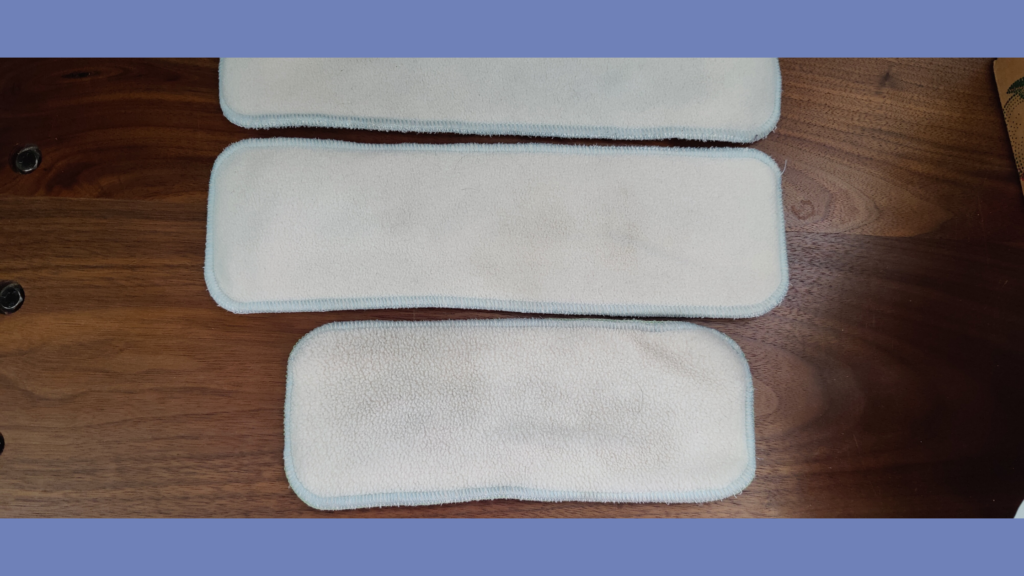
Tight Budget?
If you have any unanswered questions, please comment below or email me at [email protected]. I would love to hear from you!
